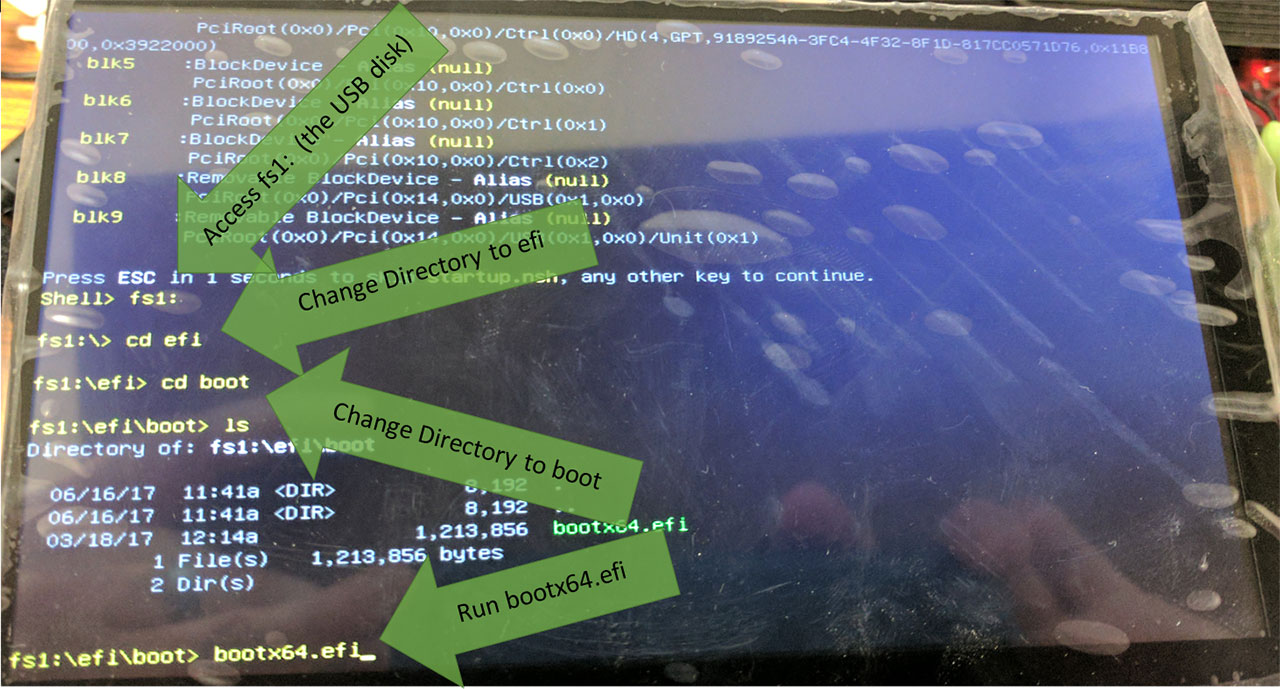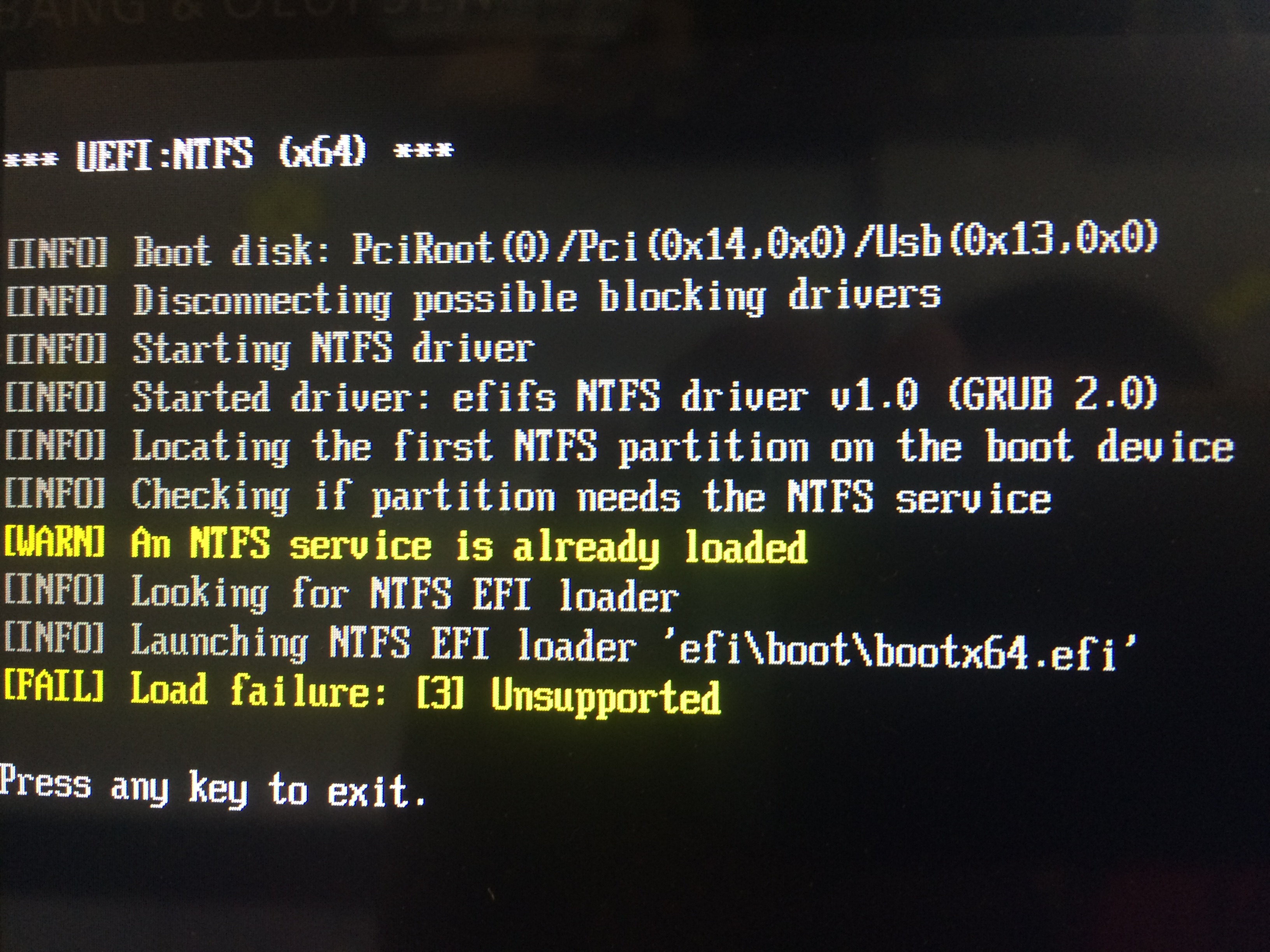

#Boot from efi shell driver
When you find them run these two commands to start the pxe boot #replace usb.efi with whatever you named the driver file Keep incrementing fs# (fs0: fs1: fs3: etc.) until you see your ipxe.efi and usb driver files. On the ReFInd gui boot screen select one of the efi shell options.Īt the efi shell find which fs (file system) your efi files are on (the ones put on either the second flash drive or the C drive) by running these commands fs0: Tapping esc on boot should bring up a boot menu. Save changes and exit and start tapping esc (Note: I always seem to have to hold shift and hit restart from windows to force it to boot to uefi firmware) It will probably work regardless of the network stack setting, but better safe than sorry. Now boot to the bios to make sure the secure boot setting is off and the network stack is enabled.

Now plug the usb ethernet adapter, and the flash drives into the usb hub and plug the usb hub into the asus t100 usb port (well technically I have a T100H, but this method also worked on a Fusion5 chinese tablet, RCA Cambio tablet, and the atom and core M versions of the intel compute stick). It makes a ~6MB partition that I’m not sure can be extended to fit the other files.create a refind efi bootable flash drive using a tool like rufus to put the USB flash drive image on a usb drive via dd that you get from here.You can also put these files on the root of the C drive.
#Boot from efi shell download
(or just download the latest one straight from the fog project github ) ipxe.efi from your /tftpboot folder on your fog server, copy it off with your favorite ftp/scp client.the efi driver for the usb (found at this link, also attached 0_1479851633433_SmscUsbNetDriver.efi, also credit where credit is due, I discovered this file via this blog post ) (also I renamed this to usb.efi for simplicity later).On the first FAT32 formatted usb drive you just need a couple files in the root of the drive.(you may get away with one, but I used 2) 2 usb drives, no substantial size needed.It has the SMC LAN 7500 chipset, which is the important part I used the startech USB210000S2 Usb ethernet adapter.A usb hub, any hub with 3 or more ports should do.
#Boot from efi shell 64 Bit
What I used (I did 64 bit efi, substitute 32 bit versions of. It’s a little bit abstract, but not too hard, I promise, give it a chance. However since that didn’t work for me, I found a different method. Supposedly you should be able to just enable the network stack in bios and then if it’s a ethernet adapter that’s recognized you can set it as a boot option or select it by hitting esc to bring up the boot menu. If you don’t have a efi shell, but have a efi bios, use rEFInd to boot to a efi said in UEFI-PXE-Boot (Asus t100 Tablet): Assuming your DHCP or dnsmasq is already setup properly, copy the ipxe.efi file to a usb or local drive on the host, then run it from an efi shell.įor usb ethernet adapters load the the efi driver first.


 0 kommentar(er)
0 kommentar(er)
